Diary of Anais Nin, Volume 1 Read online
The Diary of Anaïs Nin
1931–1934
Anaïs Nin
* * *
Edited and with an Introduction by Gunther Stuhlmann
* * *
A Harvest Book
The Swallow Press
and
Harcourt, Inc.
San Diego New York London
* * *
Copyright © 1966 by Anaïs Nin
Copyright renewed 1994 by Rupert Pole
Introduction copyright © 1966 by Gunther Stuhlmann
Copyright renewed 1994 by Gunther Stuhlmann
All rights reserved.
No part of this publication may be reproduced
or transmitted in any form or by any means,
electronic or mechanical, including photocopy, recording,
or any information storage and retrieval system,
without permission in writing from the publisher.
Requests for permission to make copies of
any part of the work should be mailed to:
Permissions Department,
Harcourt, Inc., 6277 Sea Harbor Drive,
Orlando, Florida 32887-6777.
Library of Congress Catalog Card Number: 66-12917
ISBN 0-15-626025-5
Printed in the United States of America
JJ KK
* * *
Introduction
For more than three decades, Anaïs Nin's monumental diary, or journal, has been the object of much rumor, gossip, and conjecture. Since the early 1930s, when she showed sections of the journal for the first time to some of her close friends and associates in Paris, the word has spread that here was one of the unique literary documents of our century. In an often-quoted article in the English magazine Criterion, in 1937, Henry Miller ventured the opinion that the diary would "take its place beside the revelations of St. Augustine, Petronius, Aboard, Rousseau, Proust." Others, who over the years watched the diary grow to its present state of some 150 volumes—adding up to more than 15,000 pages in typewritten transcript—contributed their share to the growing legend surrounding this remarkable, lifelong undertaking.
Anaïs Nin herself has often stated that the body of her published, artistic work—the five novels which make up the roman fleuve, Cities of the Interior, and her other books and stories—were merely outcroppings of the diary, and that her real life, as a writer and a woman, was contained in the pages of the journal. "I have a natural flow in the diary," she wrote more than thirty years ago, "what I produce outside is a distillation, the myth, the poem." And after an argument about one of her early works of fiction, she noted in the diary: "Sometimes when people talk to me, I feel that I have done all they ask of me here, in the journal, when they ask me to be authentic, passionate, explosive, etc."
Much of the speculation about this legendary work, no doubt, derived from the fact that Miss Nin, in her intense and multileveled life, moved freely, and sometimes mysteriously, in the cosmopolitan world of international art and society. "Friendships, relationships, and travel," she has said, "are my greatest pleasure. The world I live in, in every city, is that of writers, painters, musicians, dancers, and actors." As a child, born in Neuilly, a suburb of Paris, she had accompanied her famous father, the Spanish composer-pianist Joaquin Nin, on his glamorous concert tours through Europe. As a youngster, she had escaped from the poor gentility of her Danish-born mother's rooming house in New York into the enchanted gardens of her fantasies, and eventually had become an artists' model and, later, a Spanish dancer. As a fledgling writer, she had, in the 1930s, re-entered the intellectual and social climate of Paris, captivated, and influenced, by Proust, Lawrence, and Giraudoux. In 1929, she had settled in Louveciennes, and there—as, after the outbreak of World War II, in her studio on the edges of New York's Greenwich Village—had provided a gathering place for many "unknown," and often subsequently "famous," creative people. Indeed, the roster of those who appear, at one time or another, in Miss Nin's diary represents an impressive cross-section of the literary and artistic life of the past forty years.
But those who may have set their sights merely upon the usual "exposures" of famous lives, the "tell-all" confessions of an insider, will undoubtedly be disappointed by this long-awaited first publication of a section of Miss Nin's diary. To be sure, Anaïs Nin writes at length, and often with startling candor, about her relationships, her friends and acquaintances, the "famous" and the "ordinary" people who have crossed her path. She is, indeed, "authentic, passionate, explosive." But her concern is not that of the literary gossip. She does not simply treat us to another "keyhole" view of the literary life.
The true significance, the uniqueness, the "revelation" of her diary is of another kind. Certainly, Miss Nin provides much important and valuable biographical, and autobiographical, detail to our knowledge of an artistic era, she portrays and records with flashing insight people, conversations, events. Yet in the end it does not seem to matter that the struggling writer she befriends is Henry Miller, that the tortured poet who confides in her is Antonin Artaud, the propounder of the "theatre of cruelty," or that Dr. Otto Rank is her psychiatrist. The "revelation" of Miss Nin's diary, essentially, lies in the fact that here, for the first time, we have a passionate, detailed, articulate record of a modern woman's journey of self-discovery.
"What I have to say," Miss Nin writes, "is really distinct from the artist and art. It is the woman who has to speak. And it is not only the woman Anaïs who has to speak, but I who have to speak for many women. As I discover myself, I feel I am merely one of many, a symbol. I begin to understand women of yesterday and today. The mute ones of the past, the inarticulate, who took refuge behind wordless intuitions, and the women of today, all action, and copies of men. And I, in between..."
Indeed, Miss Nin's diary is more than the whetstone of an emerging writer, though she is always aware of the artistic problem of "what to include, what to tell, how to tell it." It is more than a notebook of ideas, dreams, and experiences, though, as she has stated, much of her conscious literary work is drawn from the pages of the diary. And it is more than a mere record of her days, her conversations, her encounters, though she captures them with vivid immediacy. The diary is the log of her journey through the labyrinth of the self, of her effort to find, and to define, the woman Anaïs, the real and the symbolic one who balances "between" action and contemplation, involvement and self-preservation, emotion and intellect, dreams and reality, and who sometimes despairs of ever reconciling these disparate elements.
There is an entry in the diary, in the mid-1930s, which may explain not only Miss Nin's attitude to the "outside" world—to the gathering political and economic storms which, much to the dismay of her critics, found no direct reflection in her artistic work—but also the basic, underlying function of the journal itself. "What makes people despair," she wrote, "is that they try to find a universal meaning to the whole of life, and then end up by saying it is absurd, illogical, empty of meaning. There is not one big, cosmic meaning for all, there is only the meaning we each give to our life, an individual meaning, an individual plot, like an individual novel, a book for each person. To seek a total unity is wrong. To give as much meaning to one's life as possible seems right to me. For example, I am not committed to any of the political movements which I find full of fanaticism and injustice, but in the face of each human being, I act democratically and humanly. I give each human being his due. I disregard class and possessions. It is the value of their spirit, of their human qualities I pay my respect to, and to their needs as far as I am able to fulfill them. If all of us acted in unison as I act individually, there would be no wars and no poverty. I nave made myself personally responsible for t
he fate of every human being who has come my way."
The diary is Anaïs Nin's book. It is her created life, the filter through which she strains her experience into a meaningful pattern. It is also her shield and her confessional.
The diary had its inception on the boat that brought Anaïs Nin, her mother and two brothers, from Spain to America. At the age of eleven Miss Nin already was possessed by what she later called "an immediate awareness," both "terrible and painful." Her father, the idol of her early years, had deserted the family, had turned his attention to another, a very young woman. At first, she tried to win back her father: "The diary began as the diary of a journey, to record everything for my father. It was really a letter, so he could follow us into a strange land, know about us." But the "letter" was never sent (her mother told her it would get lost), and the diary became also "an island, in which I could find refuge in an alien land, write French, think my thoughts, hold on to my soul, to myself."
Isolated from her father, from her European childhood, from the supportive strictures of her early Spanish Catholicism, forced to adapt to a new country, a new language, Anaïs Nin rapidly acquired a sense of her own separateness. "My dear diary," she wrote at the time, "it is Anaïs who is speaking to you, and not somebody who thinks as everybody should think. Dear diary, pity me, but listen to me."
As the fanciful youngster blossomed into a vivacious young woman, "possessed by a fever for knowledge, experience and creation," Anaïs Nin also began to build for herself an "image," a "persona" which enabled her to face the world. The sense of drama, the imagination she had displayed as a child, now asserted itself, instinctively as well as consciously, in her adult life. Like the characters in her fiction, like Sabina in A Spy in the House of Love, she gave herself wholeheartedly to the "roles" she felt she was expected to play—daughter, wife, artist, enchantress, bohemian, friend, caretaker, etc.—to the expectations and demands that others made upon her.
"There were always, in me," she noted soberly at the age of twenty-nine, "two women at least, one woman desperate and bewildered, who felt she was drowning, and another who would leap into a scene, as upon a stage, conceal her true emotions because they were weaknesses, helplessness, despair, and present to the world only a smile, an eagerness, curiosity, enthusiasm, interest."
While the world watched with fascination the gay, charming, intelligent, mysterious Anaïs, the other women in her—the shy, the strong, the practical, the unsure, the observing, the detached, the childish—clamored for recognition in the pages of the diary. It is the gathering place of her fragmented self, her retreat from the demands of living.
"This diary is my kief, hashish, and opium pipe. This is my drug and my vice. Instead of writing a novel, I lie back with this book and a pen, and dream, and indulge in refractions and defractions ... I must relive my life in the dream. The dream is my only life. I see in the echoes and reverberations, the transfigurations which alone keep wonder pure. Otherwise all magic is lost. Otherwise life shows its deformities and the homeliness becomes rust ... All matter must be fused this way through the lens of my vice or the rust of living would slow down my rhythm to a sob."
Her escape into the diary, she realizes at times, is fraught with danger ("You have hampered me as an artist") and she fears that in "talking to this friend I have, perhaps, wasted my life." But even when her sense of isolation and despair of ever meshing the various aspects of her self into a meaningful whole prompt her to undergo psychoanalysis, she balks at being without her crutch, without her diary.
"I only regret that everybody wants to deprive me of the journal," she wrote in June, 1933, "which is the only steadfast friend I have, the only one which makes my life bearable, because my happiness with human beings is so precarious, my confiding moods rare, and the least sign of non-interest is enough to silence me. In the journal I am at ease."
Tenaciously, she hangs on to her diary. Like a talisman, she carries it with her. She writes on trains, at café tables, while waiting for an appointment, and as soon as she returns from an excursion into "life," she turns to the journal. The "lens of her vice" not only allows her to filter her experiences ("When I write afterwards, I see much more, understand better, I develop and enrich"), it also gives her writing its rare sense of immediacy.
"I live more on time. What is remembered later does not seem as true to me. I have such a need of truth. It must be that need of immediate recording which incites me to write almost while I am living, before it is altered, changed by distance or time."
This vivid freshness, coupled with her enriching reflection, seems to have determined not only the marvelously natural flow Miss Nin has achieved in her diary ("Writing for a hostile world discouraged me. Writing for the diary gave me the illusion of a warm ambiance I needed to flower in"), but, to some extent, also the nature of her material. In an essay "On Writing," published in 1947, she wrote: "The diary taught me that it is in the moments of emotional crisis that human beings reveal themselves most accurately. I learned to choose the heightened moments because they are the moments of revelation."
Anaïs Nin's passionate pursuit of truth, her peeling away of the many layers of a character in search of the illusive human core, often strikes her as painful and dangerous. "It hurts me to be giving myself away." The woman in her wearies of the ultimate exposure. "What kills life," she had written, "is the absence of mystery." Even when she decides to show her father, whom she had seen again in 1933, some of the childhood diaries originally written for him, she has her doubts. "These days," she wrote in a letter to him, "I feel like abdicating as a writer. It suddenly seems monstrous to me to expose the feelings one has, even those in the past, even the dead ones."
Though many of her friends and admirers had urged her for years to begin with the publication of what they considered her true life work as a writer—see, for instance, the recurring references in Henry Miller's Letters to Anaïs Nin (Putnam, 1965)—Miss Nin, for various reasons, hesitated. There were problems of personal privacy, legal hurdles, and there was the enormous bulk of the manuscript, which made a chronological, complete publication of the work an economic impossibility. So the original manuscript remained in Miss Nin's iron strong-boxes, first in France (where, in the turmoil of the early days of World War II, the whole diary was lost, for some time, at a rural railroad station), and subsequently in the United States. Maxwell Perkins, the editor who had struggled with the manuscript coffers of Thomas Wolfe, once suggested to Miss Nin a one-volume condensation of the diary, but quickly changed his mind and protested that nothing should be cut. Alas, a complete publication of the work, even today, remains impossible. We can only hope that some day the entire diary will be made available." For the moment, we must be content with, and grateful for, the possible.
The present volume—the first in a projected series drawn from the body of the work—begins in 1931, at a time when Miss Nin herself is about to publish her first book, an appreciation of D. H. Lawrence, which gained her first public recognition as a writer. It seemed a logical starting point. It ends, in the winter of 1934, when Miss Nin leaves Paris for what turned out to be a brief stay in New York. The present text represents approximately half of the material contained in the ten original manuscript volumes (No. 30 to No. 40) covering this period. In preparing this volume for publication, Miss Nin, and the editor, still faced certain personal and legal considerations inherent in the nature of the diary. Several persons, when faced with the question of whether they wanted to remain in the diary "as is"—since Miss Nin did not want to change the essential nature of her presentation—chose to be deleted altogether from the manuscript (including her husband and some members of her family). The names of some incidental figures have been omitted or changed, since, as any reader will soon see, the factual identity of a person is basically unimportant within the context of the diary. Miss Nin's truth, as we have seen, is psychological. The dates in brackets, given by the editor, also are merely intended to indicate the flow of time (or
date a specific event), and do not always correspond to the numerous dates in the original manuscripts, where retrospective entries sometimes confuse the actual chronology. Some excerpts from the earlier childhood diaries have been translated from the original French and included by Miss Nin to provide background information and facilitate the understanding of certain situations, notably Miss Nin's relationship to her father. A short bibliography of Miss Nin's books is given elsewhere in this volume.
"I believe literature, as we have known it, will die, is dying," Anaïs Nin noted in her diary many years ago. Yet in creating this diary she has, perhaps, already given us a new kind of literature: her own articulate record of an individual past which, in its timeless, universal validity, provides us with a blueprint for our own future. "We are going to the moon," Anaïs Nin has written. "That is not very far. Man has so much farther to go within himself."
GUNTHER STUHLMANN
New York
October 1965
[Winter, 1931–1932]
Louveciennes resembles the village where Madame Bovary lived and died. It is old, untouched and unchanged by modern life. It is built on a hill overlooking the Seine. On clear nights one can see Paris. It has an old church dominating a group of small houses, cobblestone streets, and several large properties, manor houses, a castle on the outskirts of the village. One of the properties belonged to Madame du Barry. During the revolution her lover was guillotined and his head thrown over the ivy-covered wall into her garden. This is now the property of Coty.
There is a forest all around in which the Kings of France once hunted. There is a very fat and very old miser who owns most of the property of Louveciennes. He is one of Balzac's misers. He questions every expense, every repair, and always ends by letting his houses deteriorate with rust, rain, weeds, leaks, cold.

 Diary of Anais Nin, Volume 5
Diary of Anais Nin, Volume 5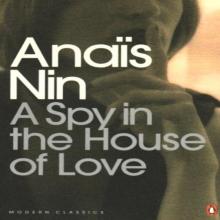 A Spy in the House of Love
A Spy in the House of Love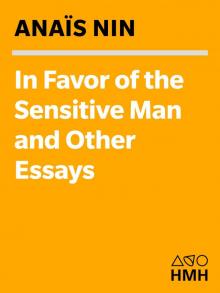 In Favor of the Sensitive Man and Other Essays (Original Harvest Book; Hb333)
In Favor of the Sensitive Man and Other Essays (Original Harvest Book; Hb333)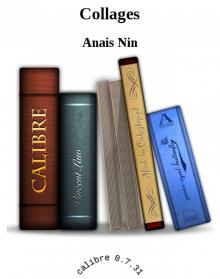 Collages
Collages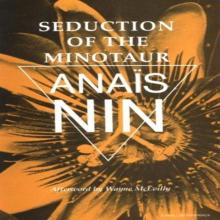 Seduction of the Minotaur
Seduction of the Minotaur Children of the Albatross
Children of the Albatross Delta of Venus
Delta of Venus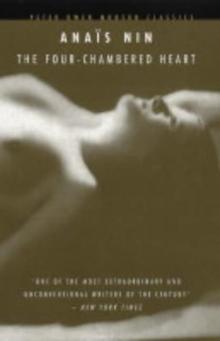 The Four-Chambered Heart coti-3
The Four-Chambered Heart coti-3 Diary of Anais Nin, Volume 2
Diary of Anais Nin, Volume 2 Diary of Anais Nin, Volume 1
Diary of Anais Nin, Volume 1 Diary of Anais Nin, Volume 4
Diary of Anais Nin, Volume 4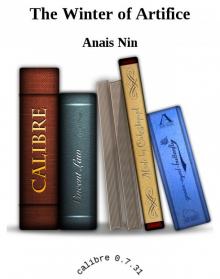 The Winter of Artifice
The Winter of Artifice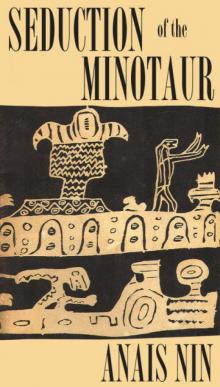 Seduction of the Minotaur coti-5
Seduction of the Minotaur coti-5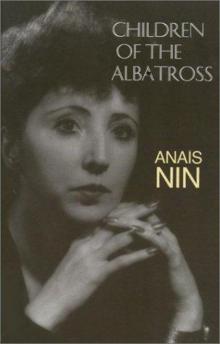 Children of the Albatross coti-2
Children of the Albatross coti-2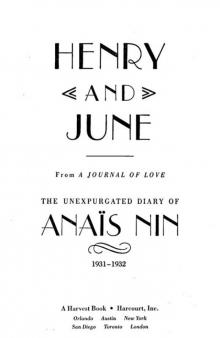 Henry and June: From A Journal of Love -The Unexpurgated Diary of Anaïs Nin (1931-1932)
Henry and June: From A Journal of Love -The Unexpurgated Diary of Anaïs Nin (1931-1932) Ladders to Fire
Ladders to Fire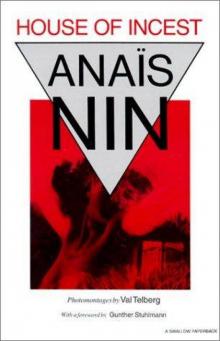 House of Incest
House of Incest